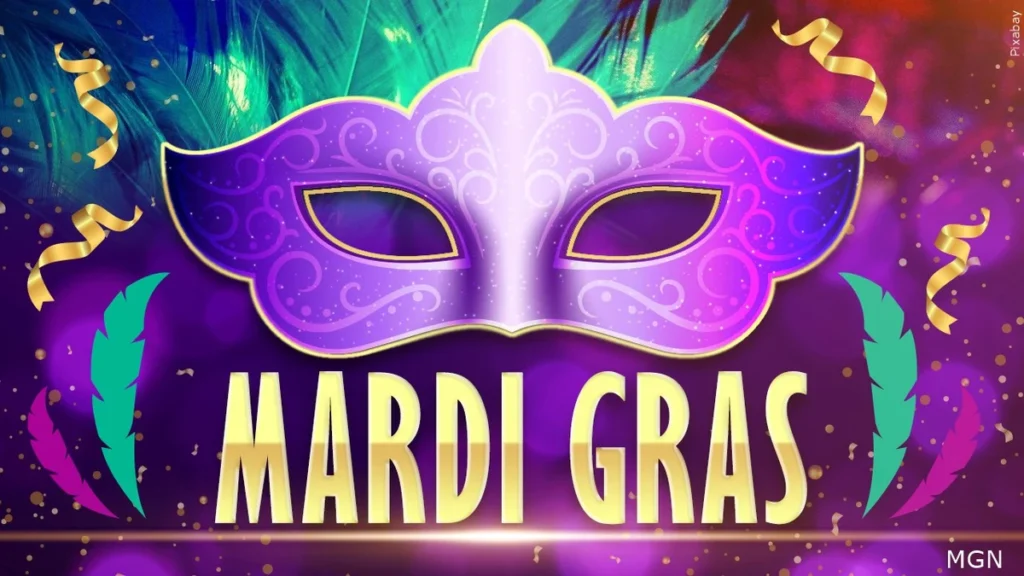Table of Contents
Mardi Gras, also known as Fat Tuesday, is a vibrant and festive celebration that occurs before the solemn season of Lent in the Christian calendar. It is marked by elaborate parades, colorful costumes, and indulgent feasting. In this article, we delve into the history, traditions, and upcoming celebrations of Mardi Gras in 2024.
History of Mardi Gras
Mardi Gras traces its origins back to medieval Europe, where it began as a pagan festival celebrating the arrival of spring. As Christianity spread, the festival became associated with the period preceding Lent, a time of fasting and penance before Easter. The traditions of feasting and revelry were incorporated into the Christian calendar, and Mardi Gras evolved into the elaborate celebration we know today.
Mardi Gras Traditions and Customs

Parades and Floats
Central to Mardi Gras celebrations are the elaborate parades featuring colorful floats, marching bands, and costumed revelers. These parades wind their way through the streets of cities like New Orleans, Rio de Janeiro, and Venice, drawing thousands of spectators each year.
Masks and Costumes
Masks have long been associated with Mardi Gras, allowing revelers to conceal their identities and indulge in a spirit of anonymity and mischief. Elaborate costumes, adorned with feathers, sequins, and beads, are also a common sight during the festivities, adding to the sense of spectacle and extravagance.
King Cake Tradition
A beloved tradition of Mardi Gras is the consumption of king cake, a sweet pastry topped with colorful icing and sprinkled with sugar. Hidden within the cake is a small figurine, usually representing a baby or a king. The person who finds the figurine is said to have good luck for the coming year and is often tasked with hosting the next Mardi, Gras celebration.
Mardi Gras Celebrations Around the World
While Mardi, Gras is most famously celebrated in New Orleans, it is observed in various forms around the world.
New Orleans, USA
New Orleans is synonymous with Mardi Gras, hosting one of the largest and most extravagant celebrations in the world. The city comes alive with pa,rades, masquerade balls, and street parties, drawing millions of visitors each year.
Rio de Janeiro, Brazil
In Rio de Janeiro, Mardi, Gras is known as Carnival and is celebrated with a week-long extravaganza of samba parades, street parties, and music festivals. The city’s famous Sambadrome stadium is the focal point of the festivities, where samba schools compete in elaborate parades.
Venice, Italy
Venice is renowned for its elegant and sophisticated Mardi, Gras celebrations, featuring elaborate masquerade balls, costume contests, and gondola parades along the city’s picturesque canals. The Venetian Carnival is a spectacle of opulence and glamour, attracting visitors from around the world.
Mardi Gras 2024: What to Expect

Mardi Gras 2024 promises to be a spectacular celebration, with festivities planned in cities around the world. While the exact schedule may vary depending on location, visitors can expect a full lineup of parades, parties, and cultural events.
Events and Schedule
Each city has its unique schedule of events for Mardi Gras 2024, including parades, concerts, and street festivals. Visitors are encouraged to check local listings for up-to-date information on timings and locations.
COVID-19 Precautions
In light of the ongoing COVID-19 pandemic, organizers of Mardi Gras events are implementing precautions to ensure the safety of participants and spectators. These may include mask mandates, social distancing measures, and capacity limits for indoor venues. Visitors are advised to adhere to local guidelines and regulations to help prevent the spread of the virus.
Tips for Celebrating Mardi Gras Safely
- Plan and familiarize yourself with the schedule of events.
- Respect local customs and traditions, including dress codes and behavior expectations.
- Stay hydrated and pace yourself during festivities.
- Be aware of your surroundings and keep valuables secure in crowded areas.
- Follow COVID-19 safety guidelines and precautions to protect yourself and others.
Conclusion
Mardi, Gras is a celebration of joy, community, and cultural heritage, bringing people together in a spirit of camaraderie and revelry. Whether you’re dancing in the streets of New Orleans or admiring the elaborate costumes of Venice, Mardi, Gras offers a glimpse into the rich tapestry of human experience.
Read Also:-DAY-TO-NIGHT OUTFITS
FAQs
What is the significance of the colors of Mardi, Gras?
The traditional colors of Mardi, Gras—purple, green, and gold—have symbolic meanings. Purple represents justice, green symbolizes faith, and gold signifies power.
Why is Mardi, Gras also known as Fat Tuesday?
Fat Tuesday refers to the practice of indulging in rich, fatty foods before the start of Lent, a period of fasting and abstinence in the Christian calendar.
How long does Mardi, Gras last?
Mardi, Gras typically lasts for several days, culminating on Fat Tuesday, the day before Ash Wednesday, and the beginning of Lent.
What is the significance of the king cake tradition?
The tradition of hiding a figurine in the king’s cake dates back to ancient Rome and is believed to bring good luck to the person who finds it.
Are there age restrictions for participating in Mardi, Gras festivities?
While many Mardi, Gras events are family-friendly, some activities, such as certain parades and parties, may have age restrictions or require parental supervision for younger attendees.






